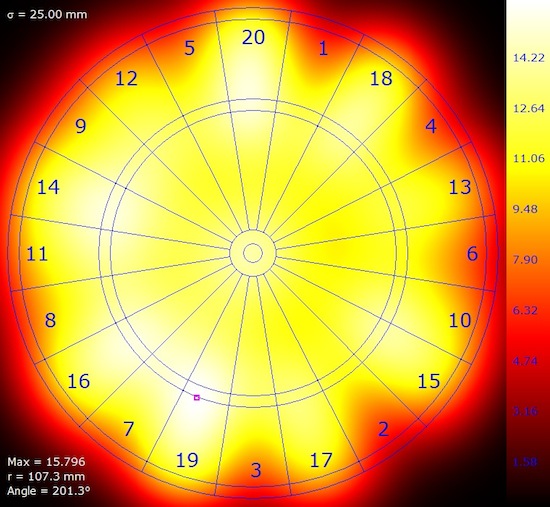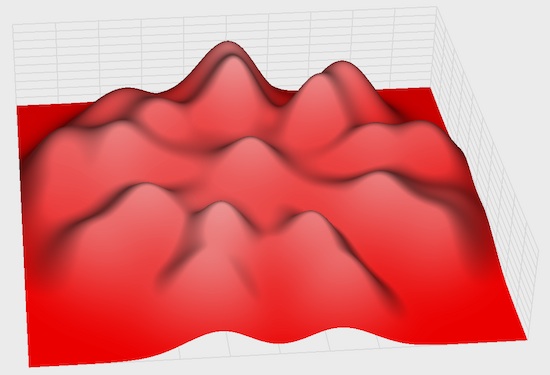17 Jan Statistician’s guide to darts – updated
[Update below.] Software designer Nick Barry used the mathematics of probability to calculate the optimal darts strategy for players of varying skills, and turned the results in a series of infographics:


The critical issue is: Which part of the board should players of varying skills aim for?
Should they aim for the triple 20, with a big payout on a success, but a low score from a miss? Or, should they aim for the bullseye?
Alternatively, is there some other optimal location on the board they can aim for that, whilst not the highest scoring region, has a large expanse of middle-of-the-road point values. Would aiming for this region, even with an inaccurate shot, get a reasonable number of points such that, on average, the expected score is the highest that can be achieved?
The true answer to this riddle, as we will see, is that “it depends…”
The optimal strategy for aiming depends on your skill as darts player. A very skillful player should aim for the middle of the triple 20; Much of the time he will hit his target, and the times he misses will be few enough that his average score will still be high.
A very poor player should aim close to the bullseye, as just hitting the board will be an achievement (and a scoring one at that!). Aiming for the center maximizes the chances of hitting something.
But what happens between these two extreme?
Serious darts buffs should check up the whole fascinating post.
Non-dart-chucker Derek Andrews detects a flaw in Barry’s analysis:
It seems to assume that standard deviation would be the same in both vertical and horizontal directions.
It has been many years since I threw a dart, but I seem to think that my horizontal aim is much better than my vertical aim, the latter relying heavily on a good sense for the weight and balance of the projectile.
H/T: Nathan Yao
